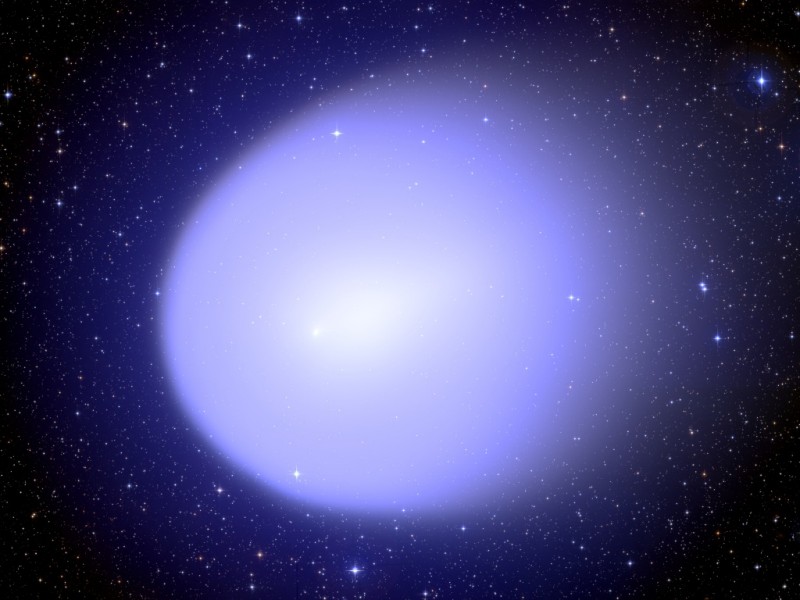Expansive Comet Holmes

Explanation:
The spherical coma of Comet Holmes has swollen
to a diameter of over 1.4
million kilometers, making the
tenuous, dusty cloud even
bigger
than the Sun.
Scattering sunlight, all that dust and gas came from the comet's
remarkably
active nucleus, whose diameter before
the late October
outburst was estimated to be a
mere 3.4 kilometers.
In this sharp image, recorded on November 14 with
the
Canada-France-Hawaii Telescope,
stars are easily visible right through the outer
coma,
while the
nucleus is buried inside the condensed,
bright region.
The bright region of the coma seems offset from
the center, consistent with the idea that a
large fragment drifted away from the nucleus
and disintegrated, producing the comet's spectacular outburst.
Of course, more
recent
images of Holmes also
show the bright star Mirfak (Alpha Persei) shining through
as the comet sweeps slowly through the constellation
Perseus.
Authors & editors:
Robert Nemiroff
(MTU) &
Jerry Bonnell
(USRA)
NASA Web Site Statements, Warnings,
and Disclaimers
NASA Official: Jay Norris.
Specific
rights apply.
A service of:
LHEA at
NASA /
GSFC
& Michigan Tech. U.

